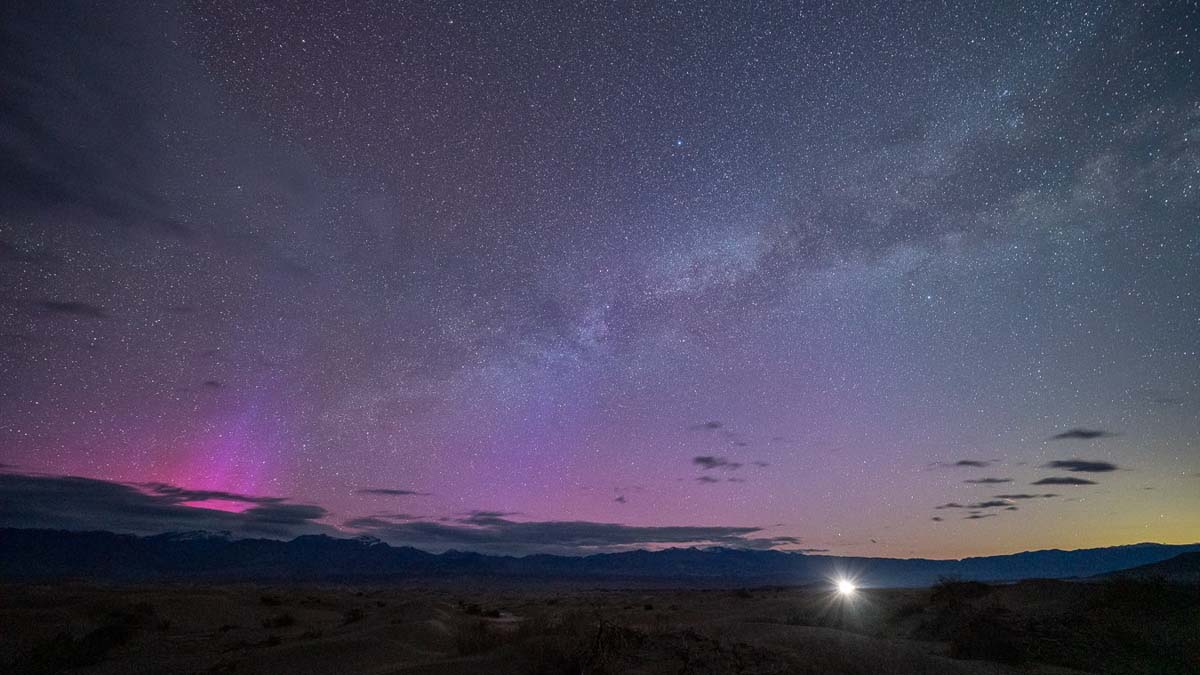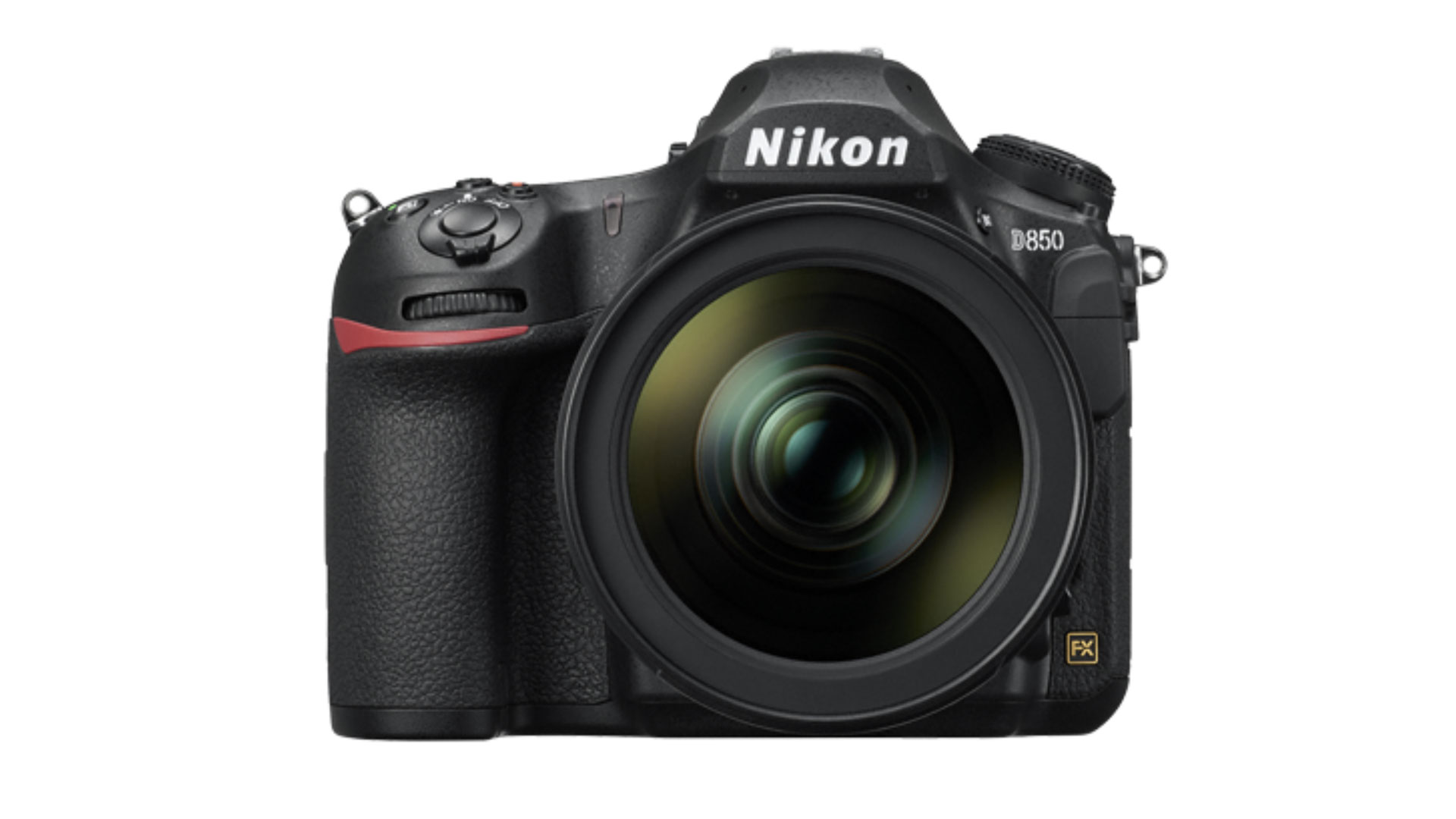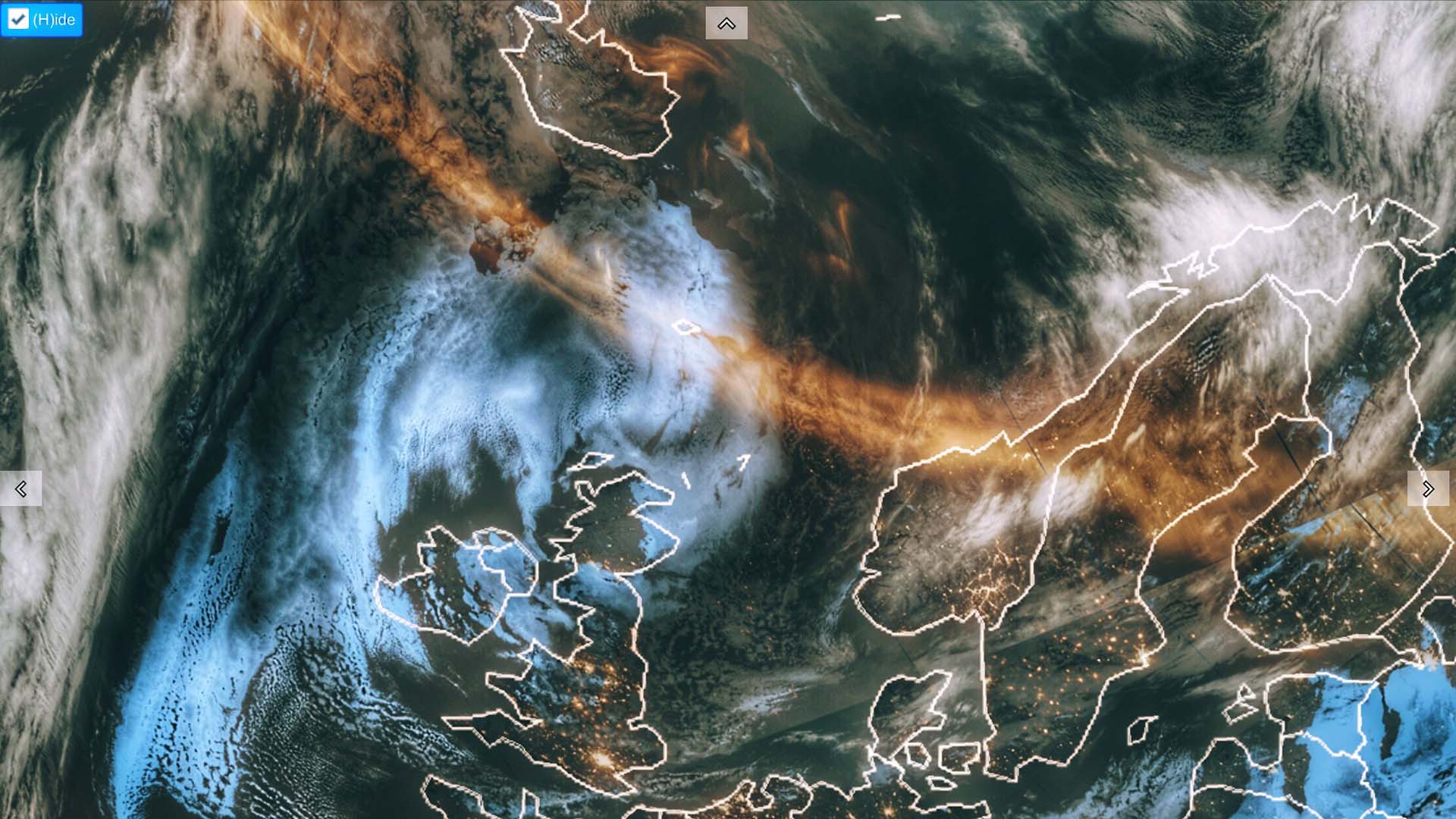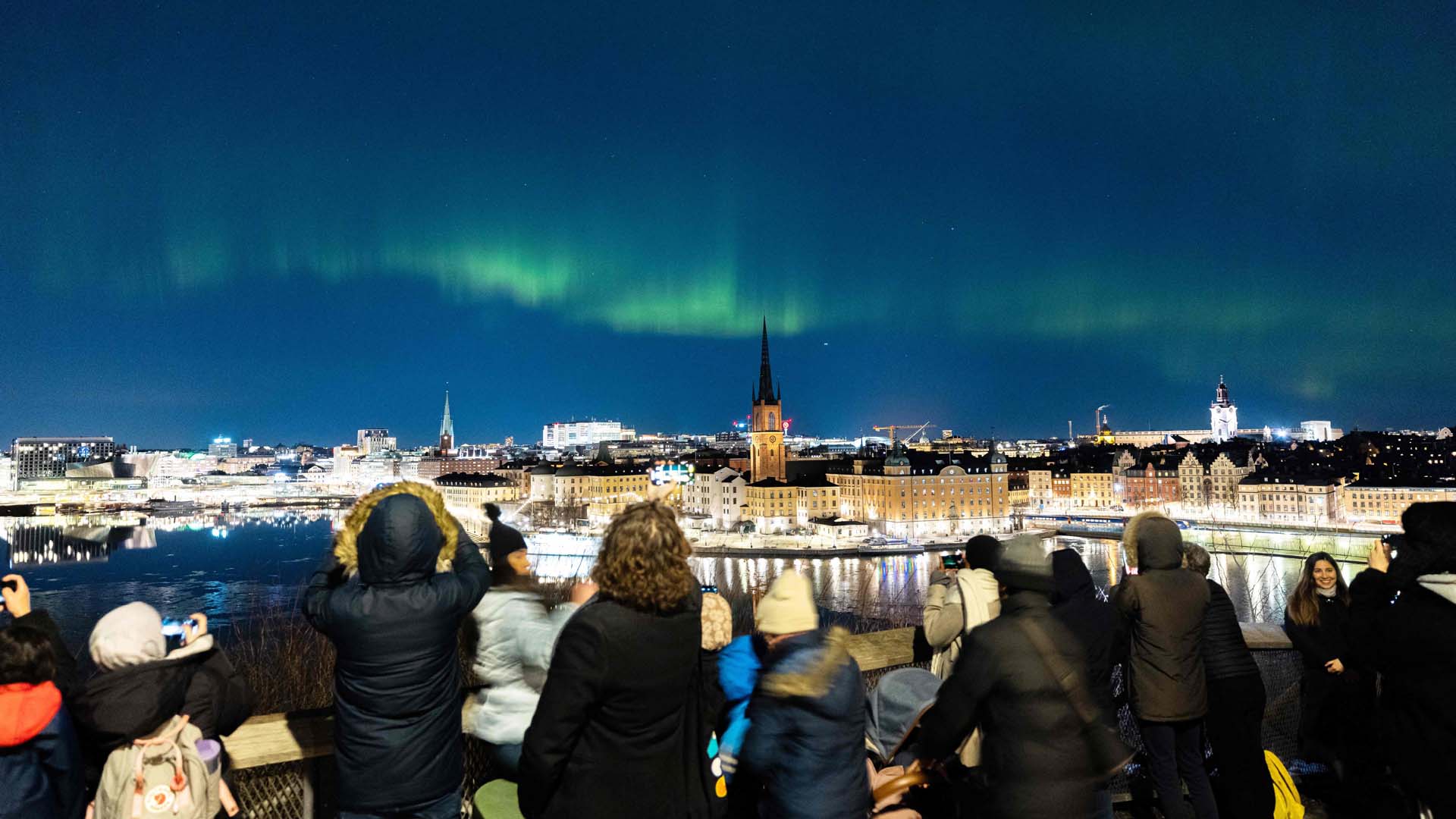The amazing auroras of February 2023 are a visual feast for stargazers (photos)
A series of powerful solar storms set the sky ablaze in the last two days of February, with aurora sightings reported unexpectedly far away from their usual territories.

Earth recently experienced the most powerful solar storm of the current solar cycle, which caused auroras to spread far away from their usual haunts around the poles. Unexpected sightings were reported as far as California and Western Australia.
Below, you'll see some of the best shots of the late-February 2023 aurora magic. If you're looking to snap photos of the night sky, check out our guide on how to photograph auroras, as well as our best cameras for astrophotography and best lenses for astrophotography.
1. California

Want a photograph auroras? We recommend the Nikon D850 as the top pick in our best cameras for astrophography guide.
Auroras occur when charged particles of solar wind arrive at Earth in high quantities and interact with Earth's atmosphere. Solar wind consists mostly of electrons and protons released from the sun's upper atmosphere, the corona. When these particles carry a magnetic field that has the opposite direction than Earth's magnetic field, the two fields connect and channel the solar wind particles deep into the atmosphere.
Due to the nature of Earth's magnetic field lines, the particles tend to penetrate the deepest above the polar regions, which is why most auroras remain restricted within the polar circles.
The G3 category solar storm that hit Earth on Tuesday (Feb. 28), however, delivered such a powerful solar wind blast that the auroral glow was observable as far south as California.
American astrophotographer Shari Hunt was completely taken by surprise when she spotted the purplish glow in her picture of the Milky Way taken from California's Death Valley.
"I thought I left my camera on auto white balance or something went wrong," Hunt told Space.com in an email. "I had never seen an airglow like that! So, I took another shot and told my friend who was also there to check with her camera."
Breaking space news, the latest updates on rocket launches, skywatching events and more!
At 36 degrees northern latitude, Death Valley is too far south for most aurora displays. According to the U.S. National Oceanic and Atmospheric Administration (NOAA), a G3 storm, such the one of Feb. 28, would usually produce auroras in the northernmost U.S. states. The most severe G5 category, which usually occurs only a couple of times during each 11-year solar cycle, may light up the sky as far south as Florida. Thanks to sensitive photographic equipment, however, skywatchers can now detect polar lights from much further afield even during milder events.
Related: Where to see the northern lights: 2023 aurora borealis guide
2. Australia
Aurora visible from Island Point, just south of Mandurah tonight!Was totally worth the effort!#Aurora #Perth #Mandurah pic.twitter.com/n0zA4jhKK0February 27, 2023
The southern polar lights, also known as aurora australis, are usually visible only to researchers at science stations in Antarctica and the neighboring penguin colonies. This time, however, the southern lights spilled over as far north as Perth, Western Australia.
At 32 degrees south latitude, Perth is a little farther to the north than Melbourne, Adelaide or Tasmania, none of which sees many aurora displays.
According to a photographer who identifies as Shelley on Twitter, the glow was bright enough in Perth to be clearly visible to the naked eye.
3. Auroras from space


Astronauts on the International Space Station enjoy aurora sightings quite regularly, and these views are always spectacular. Orbiting 248 miles (400 kilometers) above Earth's surface on average, the space station completes a lap around the planet every 90 minutes, thus providing its inhabitants with an aurora tour that none on Earth can experience.
The aurora borealis during the last two days of February was so intense that it was visible even to weather forecasting satellites orbiting twice as high as the International Space Station. The NOAA-20 satellite captured a band of orange glow above the Atlantic Ocean on Sunday (Feb. 26) at 11:01 p.m. ET (0401 GMT on Monday, Feb. 27).
4. Aurora spectacle in the center of Stockholm
One of Europe's northernmost countries, Sweden enjoys polar lights regularly. Usually, however, they are not bright enough to light up the skies above the country's capital Stockholm, which, with a population of nearly one million, suffers from the usual urban ailment of light pollution.
But the polar lights of Feb. 27 and 28 were so intense that they rewarded even those completely lacking adventurous spirit. The green aurora glow was clearly visible right at the city's center, arching over the city's landmarks, including its famous city hall.
5. U.K. and France: Stonehenge, Mont-Saint-Michel adorned by auroras
The Northern Lights over Stonehenge last night 😲😍❤️💚💙💛 📷 credit by Stonehenge Drone scapes on FB#Aurora #auroraborealis #northernlights #stonehenge #stars #astro #OMG #beautiful pic.twitter.com/YNgROjYPr6February 27, 2023
Virtually the whole of the British Isles enjoyed aurora displays on Feb. 27 and 28, although cloudy weather made the aurora chase in places more complicated.
A photographer based in Wiltshire in the south of England captured an image of the mesmerizing yellow and orange glow above the iconic Stonehenge monument, which was widely shared on Twitter.
France also got one of its greatest historical sights illuminated by the polar lights. Images show the spectacular medieval abbey Mont-Saint-Michel, located on an island in northwestern France's Normandy region, with a faint purplish glow in the background.
6. Aurora glow lights up Danish and Dutch beaches
Some my best #Aurora #Auroraborealis #poollicht shots from last night at the Netherlands-1st two shot at the same time 100 meters apart shows how close it was dancing in the sky (the beams tilted the opposite way)@helgavanleur @StormchaserNL @NoorderlichtNL -Video comes later. pic.twitter.com/avg9uquahkFebruary 27, 2023
Dutch and Danish beaches provided an amazing viewing spot to experience the Feb. 27 and 28 auroras.
The Netherlands is a little too far south for regular aurora displays, but this time, the auroras were visible all over the country.
7. Aurora makes it to London
Aurora Borealis not from from London. I took this picture just twenty minutes from Amersham tube @TamithaSkov @tomkerss @VirtualAstro @standardnews @skyatnightmag @BadAstronomer @jimalkhalili @MetroUK @AmershamNews @DrStuClark @BakerStAstro #Auroraborealis #NorthernLights pic.twitter.com/3Hsn1VHbo9February 28, 2023
An unexpected aurora sighting was made by an astrophotographer identified on Twitter as @skydevphil, who managed to photograph bands of green and purple glow from the outskirts of the U.K.'s capital London.
"Aurora Borealis not [far] from London. I took this picture just twenty minutes from Amersham tube," @skydevphil tweeted.
Amersham is a tiny town about one hour's drive from central London. But with London being Europe's largest city and the most light-polluted one, the sighting certainly came as a surprise.
Editor’s Note: If you snap an amazing photo of the auroras and would like to share it with Space.com’s readers, send your image(s), comments, and your name and location to spacephotos@space.com.
Follow Tereza Pultarova on Twitter @TerezaPultarova. Follow us on Twitter @Spacedotcom and on Facebook.

Tereza is a London-based science and technology journalist, aspiring fiction writer and amateur gymnast. She worked as a reporter at the Engineering and Technology magazine, freelanced for a range of publications including Live Science, Space.com, Professional Engineering, Via Satellite and Space News and served as a maternity cover science editor at the European Space Agency.




